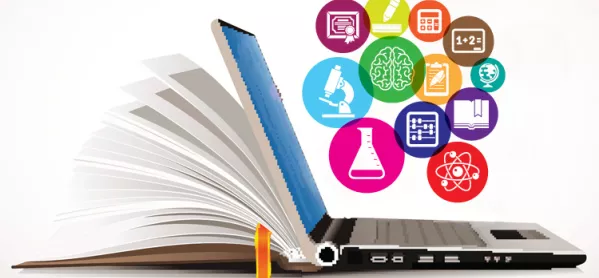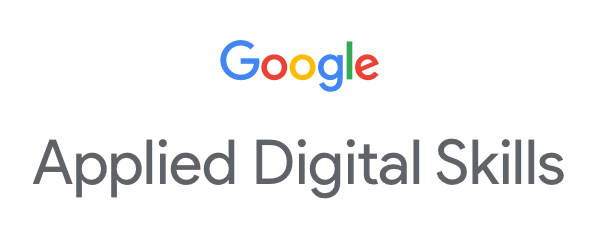The digital difference: how technology is changing learning

I always wanted to be a teacher. When I was a child I remember idolising my primary school teachers, wondering how anyone could know that much information. (Now that I am a teacher, I am very grateful to the internet!) My job is very different to the one my teachers signed up for. This is an ever-evolving occupation; it needs to adapt to the way our children grow and the way technology grows around them. This means we need to evolve, too.
The first computer I saw in my school days used floppy discs the size of a small lunchbox and could only run the most basic applications. But that didn’t matter: it was new and exciting and we were hooked. We need this level of excitement in our classrooms; our students should leave the room feeling like they want to learn more. I have seen a huge amount of change in my six years as a teacher, particularly around technological advances that enable us to deliver old content in new and exciting ways.
Sharing success
Some of my favourite tools are blogging platforms, such as Blogger.com. These enable children to have a public place to share their ideas while collaborating with others. When I was at school, the only way to have someone other than the teacher read my work was for it to be photocopied and put on our class display board. Even then, it would only be seen by a handful of adults who had a spare minute to stop and look. The rise of online platforms means it is incredibly easy to share students’ work and successes with parents, creating a virtual display board that gives a window into the classroom.
And this needn’t be limited to parents; it is also easy to get feedback on children’s work from all kinds of professionals. I once published a diary entry that one of my class had written about life in Roman times - the head of a Welsh Roman museum read it and left some fantastic comments, inspiring my pupil to write more.
Social media has become a fantastic tool for teachers to share their creativity and ideas with each other too. Sharing a discussion space with like-minded individuals is an incredible way to keep your teaching ideas fresh and up to date. Being part of this engaged online community means you can update your teaching toolkit whenever you have a spare minute, which is invaluable.
I remember that during my teacher training I was taught to engage learners by exposing them to a variety of sources; a selection of texts in literacy lessons, for example, or maps and diary entries in a history lesson. These would often take hours and hours to locate, and I found myself planning my lessons based on their content.
Since I have embraced technology in my teaching, I have discovered countless apps and websites that have done the hard work for me. I spend less time researching the content to use and more time focusing on the learning that will take place. By putting these sources in cloud-based storage apps such as Google Drive I am able to share them with my pupils too, saving time, paper and money on printing.
‘Encouraging creativity’
My colleague Jane Benson is also keen to welcome the latest technology into her classroom - despite having 30 years of well-honed teaching practice to her name. She says: “When I started teaching in 1979, I was teaching ‘O’ Level English and spent my time ‘cramming’ superficial knowledge of Shakespeare and Thomas Hardy into the reluctant brains of my Dudley students. Then, after leaving the profession to have our family I returned to the Middle Sector where as Head of History and R.E. I found myself now able to encourage creativity and ‘hands on’ learning. I am now able to encourage creativity and hands-on learning. The idea was to learn through doing and it proved to be a very exciting and rewarding time.
“My use of IT used to be very limited - the most high-tech thing I previously did was to take students’ photographs to tell a story, such as Shakespeare’s A Midsummer Night’s Dream, then have the children draw a suitable background and place their cut-out figures on top. It was effective, but very long-winded!
“Now their research can actually be effective learning, as they create presentations on PowerPoint or Google Slides or even make videos to back up their learning. And the technology the children already use means that the standard of their presentation is so much higher.”
Jane is currently working with a key stage 3 student who has struggled with writing all of his life. He was barely able to write simple sentences until recently, she explains, but by using a tablet and speech recognition software he is now able to write full paragraphs and can finally get his ideas down on paper. His confidence has soared and he is able to participate fully in lessons.
Technological advances are increasing the levels of engagement and attainment in classrooms, but this can only happen when they are used to aid learning, rather than as add-ons or gimmicks. This means that we, as educators, have to keep up with the latest developments and embrace them. We don’t want to alienate the teachers who find this more challenging but we also don’t want to separate children’s learning from the technology they are surrounded by every day. We need to help them see a clear connection between their home and school experiences.
The wide variety of collaborative and cloud-based tools available today mean it is easy for us to provide our pupils with experiences that enrich their education, while developing our own skills as practitioners by working with professionals across the globe. For me, teaching is more than a job. It’s a vocation. I am passionate and excited about educating, and I am able to create lessons that inspire passion and excitement in my students too.
James Holmes is head of computing at Cranborne Middle School in Dorset and a CAS Master Teacher
